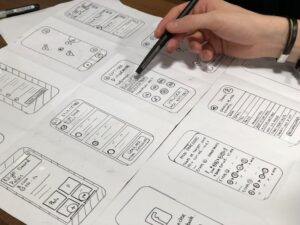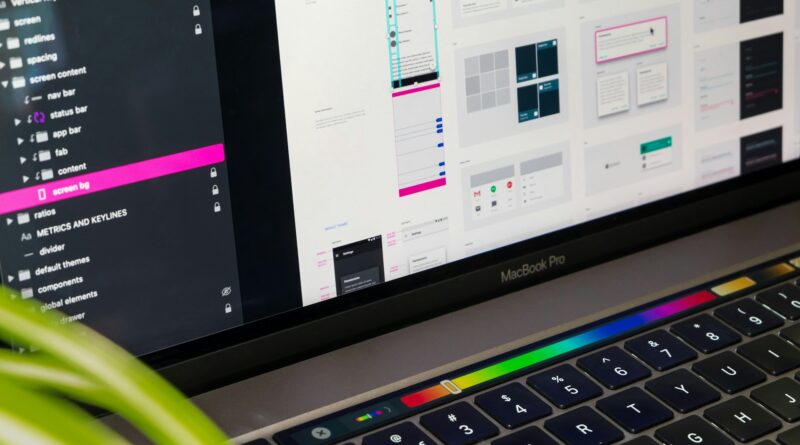Healthcare UX: A Case for Inclusive Designs that Impacts Aging and Anxiety
Healthcare UX: A Case for Inclusive Designs that Impacts Aging and Anxiety
A. Miller
Applying inclusive design for holistic wellness, aging, and mental health reduces elements that may aggravate symptoms of a challenge, disability, or some stress-inducing factors. This Healthcare UX design approach is a process of creating a digital experience that addresses the needs of healthcare users, including healthcare patients and their providers, plus the families and caregivers of the healthcare-services users. The bottom line is that whatever the ailment or healthcare goal is, digital healthcare products should be intuitive, effective, and useful so people get the care they need. This article looks at how healthcare can apply UX design to overcome or prevent potential challenges and frustrations from using technologies for health-related reasons.
—Achieving these design goals can help reduce the mental cost and stress people experience when using technology for healthcare reasons—
The Realities of Aging and Anxiety
The older, aging population is often known for using healthcare services more frequently than other demographics. The older population is also more likely to have more than one healthcare provider. It’s annoying, but unfortunately true that most parts of the body don’t work as well as people get older. According to a 2017 Pew Internet Research Center report, 42% of Americans (aged 65+) have a smartphone, and reasons for mobile app use by older adults include remaining independent or active, remembering important information, and monitoring or improving health conditions through mobile health products. That’s why understanding how aging changes cognitive function is vital as we all age. Still, it is also essential for UX designers to consider this as the number of older adults using technology increases. Though older adults use technology, an age-related digital divide remains where designers should distinguish older adults as an essential user group to consider and design for their abilities, needs, and preferences.
Aside from cognitive challenges, anxiety is another prevalent factor that impacts a large portion of the population. Anxiety is the world’s most common mental health disorder, affecting at least 301 million people, and the COVID-19 pandemic triggered a 25% increase in anxiety and depression worldwide. A 2020 study by the American Psychological Association, shows that Americans are profoundly impacted by the Covid-19 pandemic, where 8 in 10 adults (78%) say the pandemic is a significant source of stress which is a symptom of anxiety.
Why UX is Important for Healthcare
 Cognitive aging is a lifelong process, a human experience. Processing speed, memory, attention, and emotional processing are just a few ways cognition changes as we age. Stress and anxiety-inducing factors also impact the neuro-behavioral and lifestyle behaviors of a significant portion of the population. Designing simple technology and applying web accessibility principles are ways to help close the gap on some of these ability-related challenges.
Cognitive aging is a lifelong process, a human experience. Processing speed, memory, attention, and emotional processing are just a few ways cognition changes as we age. Stress and anxiety-inducing factors also impact the neuro-behavioral and lifestyle behaviors of a significant portion of the population. Designing simple technology and applying web accessibility principles are ways to help close the gap on some of these ability-related challenges.
With this reality in mind, healthcare ux should apply a social science and inclusive design lens focusing on ability-based design. Ability-based designs look at potential challenges or limitations from cognitive, physical, neuro-behavioral, sensory impairments, or chronic conditions, whether permanent, temporary, or situational (as discussed in one of my forthcoming studies). For example, the design and size of buttons can impact the experience of using mobile technology for health-related reasons, or being rushed into tasks or interactions can cause anxiety when feeling rushed while using an app. Additionally, cognitive decline happens as we age and when anxious, and thus, complex terms and confusing layouts may impact how people schedule appointments, order prescriptions, or receive reminders about an upcoming healthcare appointment.
Inclusive Design Meets Ability-based Healthcare Considerations
User experience (UX) is an iterative process used to collect information about users’ behaviors, needs, and motivations for a product, service, or space. Inclusive design looks explicitly at processes that enable and design for the full range of human diversity, such as ability, language, culture, gender, and age, and it is a subset of UX. Together, these design perspectives can benefit digital healthcare.
Attaining better health matters globally and personally as people are affected by common challenges such as cognitive changes over a lifespan or global pandemics impacting lifestyle behaviors. Digital healthcare plays a role in community health, social wellness, health awareness, and disease prevention, and focusing on ability-based designs that affect most people are tenets designers should consider. One method to help designers start thinking about how to apply these considerations is using an inclusive design checklist. As the name implies, an inclusive design checklist universally applies to many design solutions across disciplines or industries, including computing, the humanities, and the social and health sciences. One example checklist was published in a book chapter on inclusive design, and adapted for this article. Each checklist item (summarized in the table below) is cross-referenced with how that item is applied to the edge case (older people or people with anxiety) using a digital product for healthcare scheduling and reminders.
| Inclusive Design Checklist Item | Design for Older People | Design for People with Anxiety |
| You are not the user: Design for and test with the intended audience | Ensure page or screen navigation can be fully achieved using only the keyboard; Avoid features that require people to make painful writs or hand movements with a mouse; User test with diverse participants | Avoid forcing users to complete tasks in an unrealistic or impractical timeframe; User test with diverse participants |
| Avoid bias and generalizations | Older people can and do use technology; don’t assume that older people won’t use a feature, device, or app. | Anxiety is an actual condition that adversely affects people; don’t assume anxiety affects people in the same way. |
| Be mindful of text, images, and color | Use strong contrasts, easily readable fonts and sizes, and other visual cues for information; Leverage plain language principles to make the content more accessible to understand; Avoid the use of complex, triggering language, flashes, or disappearing messages that might confuse or induce stress or anxiety; Buttons, icons, and links should be large enough to easily click or tap without requiring precise motor control. | Leverage plain language principles to make the content more accessible to understand, lowering the risk of confusion or stress; Avoid using complex, triggering language, flashes, or disappearing messages that might confuse or induce stress or anxiety. |
| Prioritize content | Avoid overlapping content or content that disappears; Place most used resources near the top of the screen so users don’t have to hunt for the item; Use white space to help with layout for readability. | Design predictable interaction patterns that minimize unnecessary stress for users navigating the site. |
| Be consistent with industry standards and new design systems | Design for fluid reflows of website or app when various breakpoints are triggered; Use recognizable icons for call-to-actions. | Use recognizable icons for call-to-actions; Make call-to-actions stand out—once (not repeatedly on the same page) |
| Offer choice, give users control | Design for various breakpoints so people can use the website or app on a device or screen size of their choice; Add a back or undo button | Design websites and apps that make sure enough time is offered to complete tasks or provide options to extend time limits on a page or form; Provide ways for users to validate the accuracy of form information before submission; Add a back or undo button |
By addressing each item in the Inclusive Design Checklist with a focus on designing for older people and people who identify with neuro-behavioral conditions (such as anxiety), we can adjust design tenets to improve healthcare ux products that consider diverse abilities—people who identify with various disabilities, impairments, or chronic conditions, including but not limited to: cognitive limitations, motor or physical impairments, neurodivergent people, and mental health considerations such as anxiety or depression. Accessible, ability-based, and inclusive design is a solution to removing pain points and improving digital experiences for digital healthcare product users. Achieving these design goals can help reduce the mental cost and stress people experience when using technology for healthcare reasons.
The Lessons of Healthcare + UX
The intention of a design matters: Better health by design can become a reality when inclusive design leads the way. Despite challenges presented in this article that initially addressed older people or people with anxiety, the inclusive design approach helps to broaden its application to include other people who may be impacted by the same health and ability-based design challenges (such as people with different visual, physical, or neuro-behavioral difficulties). Thus, Healthcare UX principles apply to a larger population by design.
Cite this article in APA as: Miller, A. Healthcare UX: A case for inclusive designs that impacts aging and anxiety (2024, October 10). Information Matters, Vol. 4, Issue 10. https://informationmatters.org/2024/10/healthcare-ux-a-case-for-inclusive-designs-that-impacts-aging-and-anxiety/
Author
-
A. Miller is a professor, press director, and interdisciplinary scholar who uses a UX/HCI and inclusive design approach to enhance information communication technologies and social accessibility. Research interests are socio-technical, including accessible computing, educational technology, information and wellness design, digital communication design, information retrieval, digital preservation, and human-centered design.
View all posts





